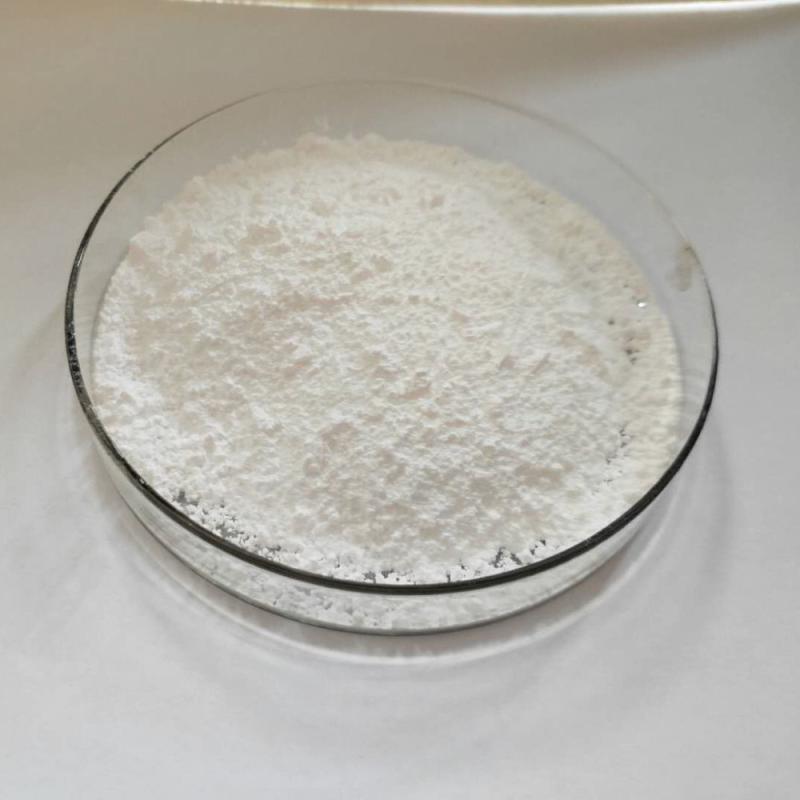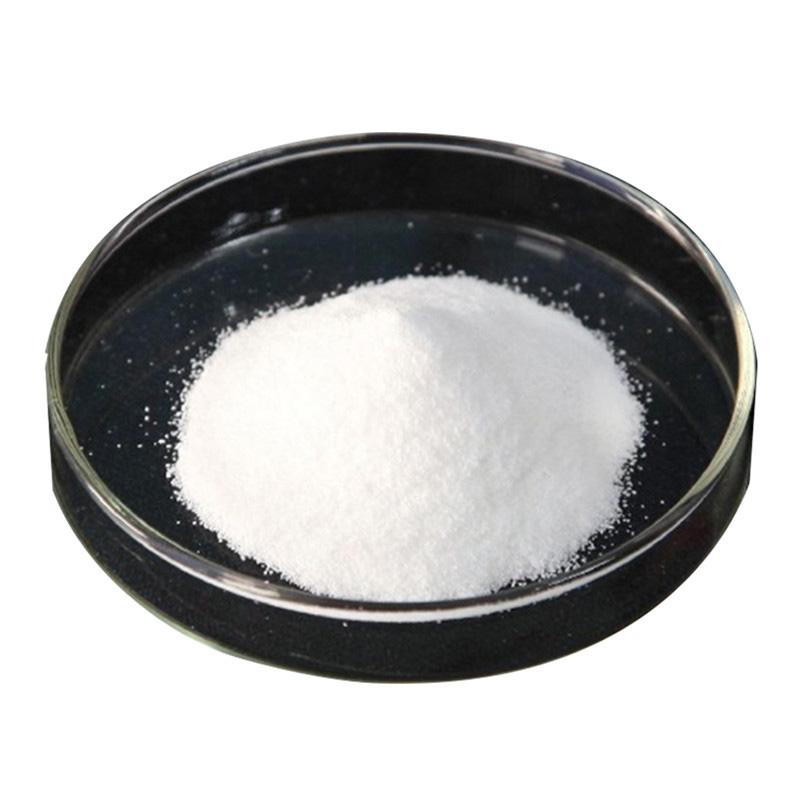Common name: IndoxacarbChemical name:reaction mass of (S)- Indoxacarb and (R)- Indoxacarb 75:25; methyl 7-chloro-2-{(methoxycarbonyl)[4-(trifluoromethoxy)phenyl]carbamoyl}-2,5-dihydroindeno[1,2-e][1,3,4]oxadiazine-4a(3H)-carboxylateMolecular formula: C22H17ClF3N3O7Structural formula:Molecular weight: 527.83CAS No.
Contact Now
Chemical name of Indoxacarb products:methyl 7-chloro-2-[methoxycarbonyl-[4-(trifluoromethoxy)phenyl]carbamoyl]-3,5-dihydroindeno[1,2-e][1,3,4]oxadiazine-4a-carboxylate;Physical and chemical properties of Indoxacarb products:Molecular weight : 527.834Density: 1.53Melting point: 139-141 DHS CBoiling point: 571.4ºC at 760 mmHgFlash: DHS 299.3 CMolecular formula :C22H17ClF3N3O7Toxicity of Indoxacarb products(DAPX-MP062) acute transoral: LD50: male 1730mg/kg, female 268mg/kg: rabbit acute transcutaneous LD50: & GT; 5000 mg/kg.
Contact Now
Confirmed that indene computer virus of cotton bollworm, smoke shoot the moth, plutella xylostella, caterpillar, beet armyworm, powder grain to the moth, blue noctuid moth, apple and so on nearly all essential agriculture pest lepidoptera has wonderful insecticidal hobby, the small inexperienced leafhopper, leafhoppers, peach aphid, potato potato beetle with wing indoxacarb is the first commercial oxadiazine insecticide.
Contact Now
Product description:Tebuconazole is a sort of high performance, large spectrum, inner absorption triazole bactericidal pesticide, with three capabilities of safety, remedy, eradication, huge bactericidal spectrum, long length of efficacy. it became located that tebuconazole, like several triazole fungicides, could inhibit the biosynthesis of ergosterol from fungicide. tebuconazole is used as seed treatment agent and foliar spray all over the global. it has a extensive bactericidal spectrum, excessive activity and long length of efficacy.
Contact Now
Common name: GlufosinateChemical name: 2-Amino-4-[hydroxy(methylphosphonoyl)]butanoic acidMolecular formula: C5H18N3O4PStructural formula:Molecular weight: 215.19CAS No. : 77182-82-2Product description:Glufosinate-ammonium, also known as glufosinate, is a non-selective foliar spray of organophosphorus herbicide. It was first synthesized and developed by the Federal German Hoechst Chemical Company in 1979.
Contact Now
Common name: SimetryneChemical name: Symetryne;N,N’-diethyl-6-(methylthio)-1,3,5-triazine-2,4-diamine;GY-BonMolecular formula: C8H15N5SStructural formula:Molecular weight: 213.3CAS No. : 1014-70-6Physical and chemical properties:The pure product is white crystals. m.p. 82~83℃, vapor pressure of 9.47×10-5Pa, easily soluble in organic solvents such as methanol, ethanol, chloroform; solubility in water at 22℃ is 450mg/L.
Contact Now
Glufosinate is a wide-spectrum herbicide that is used to govern essential weeds consisting of morning glories, hemp sesbania (sesbania bispinosa), pennsylvania smartweed (polygonum pensylvanicum) and yellow nutsedge just like glyphosate.
Contact Now
Structural formula:Molecular weight: 373.63CAS No. : 41198-08-7Physical and chemical properties:Physical state Profenofos is a pale yellow liquid with garlic-like odor. Corrosive.
Contact Now
CAS: 110488-70-5MF: C21H22ClNO4MW: 387.86 Physical chemistry properties:The melting point of 125-149 ° CVapor pressure 1 x 10-6 Pa (25 °C)Sealed in dry,Room TemperatureWater solubility 50 mg L -1 (20-23 °C) Toxicity:The acute oral LD50 of rats was greater than 3900 mg/kg, the transcutaneous LD50 was greater than 2000 mg/kg, and the acute inhaled LC50 of rats was greater than 4.24 mg/L.It has no irritation to rabbit skin, slight irritation to eyes, and no sensitization to guinea pigs.No mutagenic, teratogenic and carcinogenic effects were observed under the test conditions.
Contact Now
Common name: 2,4-DChemical name:2,4-dichlorophenoxy-acetic acid; (2,4-dichlorophenoxy)acetic acid; Acetic acid, 2-(2,4-dichlorophenoxy)-Molecular formula: C8H6Cl2O3Structural formula: Molecular weight: 221.04CAS No. : 94-75-7Physical and chemical properties:White crystals. Melting point is 138°C, boiling point is 160°C (53Pa). Soluble in organic solvents such as ethanol, acetone, ether and benzene, but insoluble in water. Rat oral LD50375mg/kg.Usage:Used as plant growth regulator, antiseptic and fresh-keeping agent. It can be used in compatibility with other disinfectants.
Contact Now
Common name: Clodinafop-propargylChemical name:2-propynyl-(R)-2-[4-(5-chloro-3-fluoro-2-pyridyloxy)phenoxyl]-prpionateMolecular formula: C17H13ClFNO4Structural formula: Molecular weight: 349.74CAS No.
Contact Now
Structural formula:Molecular weight: 249.67CAS No.
Contact Now
Common name: PymetrozineChemical name: (E)-4,5-Fihydro-6-methyl-4-((3-pyridinylmethylene)amino)-1,2,4-triazin-3(2H)-oneMolecular formula: C10H11N5OStructural formula:Molecular weight: 217.23CAS No. : 123312-89-0Product description:Pymetrozine belongs to the pyridine (pyridinethimide) or triazinone class of insecticides and is a non - cytocytic insecticide. Pymetrozine has a tactile effect on insect pests and internal absorption activity. In plants, it can transport in both xylem and phloem. Therefore, it can be used as foliar spray and soil treatment.
Contact Now
Common name: propazineChemical name: 2-Chloro-4,6-diisopropylamino-1,3,5-triazine.Molecular formula: C9H16ClN5Structural formula:Molecular weight: 229.71CAS No. : 139-40-2Product description:Triazines are systemic and selective herbicides. The pure product is colorless crystal with a melting point of 212~214℃ and a vapor pressure of 386.6×10-8Pa at 20℃. It is almost insoluble in water and hardly soluble in organic solvents, but it can be recrystallized from 2-ethoxyethanol and dimethylformamide.
Contact Now
Common name: AtrazineChemical name:2-Chloro-4-ethylamino-6-isopropylamino-1,3,5-triazine; 2-chloro-4-ethylamino-6-isopropylamino-s-triazine; Molecular formula: C8H14ClN5Structural formula:Molecular weight: 215.68CAS No. : 1912-24-9Physical and chemical properties:Atrazine is a colorless crystal with a melting point of 173~175°C. Dissolved in water, methanol and chloroform. It is stable in neutral, slightly acidic and slightly alkaline media, but alkali and inorganic acid can hydrolyze it into hydroxy derivatives without herbicidal activity at high temperature, and it is non-corrosive.
Contact Now
Structural formula:Molecular weight: 416.3CAS No. : 52315-07-8Product description:Cypermethrin (CP) is a synthetic pyrethroid used as an insecticide in large-scale commercial agricultural applications as well as in consumer products for domestic purposes. It behaves as a fast-acting neurotoxin in insects. It is easily degraded on soil and plants but can be effective for weeks when applied to indoor inert surfaces. Exposure to sunlight, water and oxygen will accelerate its decomposition.
Contact Now
Common name: Metsulfuron-MethylChemical name: 2-(4-methoxy-6-methyl-1,3,5-triazin-2-ylcarbamoylsulfamoyl) benzoic acidMolecular formula: C14H15N5O6SStructural formula:Molecular weight: 381.36CAS No. : 74223-64-6Product description:Metsulfuron is an ultra-low dosage sulfonylurea herbicide for controlling medium-broad-leaved weeds in cereals. It can be transferred upward and downward in the plant body and used as a herbicide before and after wheat sprouts.Physical and chemical properties:The pure product is a white crystalline solid. m.p.158℃(163~166℃), vapor pressure 3.3×10-10Pa(25℃).
Contact Now
Common name: FluroxypyrChemical name: 4-amino-3,5-dichloro-6-fluoro-2-pyridyloxyacetic acidMolecular formula: C7H5Cl2FN2O3Structural formula:Molecular weight: 255.03CAS No. : 69377-81-7 Product description:Fluroxypyr is an organic heterocyclic selective systemic and conductive post-emergence herbicide. Its general name is fluroxypyr, and other names include Zhipinling. It is suitable for the control of wheat, barley, corn and other gramineous crops. Various broad-leaved weeds.
Contact Now
Product description:Cypermethrin (cp) is a synthetic pyrethroid used as an insecticide in massive-scale business agricultural programs as well as in customer products for domestic functions. it behaves as a fast-performing neurotoxin in bugs. it is easily degraded on soil and plant life however can be effective for weeks while applied to indoor inert surfaces. exposure to daylight, water and oxygen will boost up its decomposition. cypermethrin is fairly toxic to fish, bees and aquatic insects, according to the countrywide pesticides telecommunications network (nptn).
Contact Now
Alachlor is an herbicide from the chloroacetanilide family. It is an odorless, white solid. The greatest use of alachlor is for control of annual grasses and broadleaf weeds in crops. Use of alachlor is illegal in the European Union and no products containing alachlor are currently registered in the United States.Its mode of action is elongase inhibition, and inhibition of geranylgeranyl pyrophosphate (GGPP) cyclisation enzymes, part of the gibberellin pathway. Common name: AlachlorChemical name: 2-chloro-N-(2,6-diethylphenyl)-N-(methoxymethyl)acetamide; Molecula
Contact Now
Product description:Z-cis-cyfluthrin is an intermediate for the preparation of lambda-cyhalothrin (cyfluthrin), tefluthrin, bifenthrin and other pyrethroids.Utilization:The lambda cyhalothrin acid fluorine-containing intermediate is one of the varieties of chrysanthemum acid, that is an essential intermediate for the synthesis of pyrethroid insecticides.
Contact Now
Usage:It's far mainly used as an insecticide for controlling aphids, leafhoppers, thrips, planthoppers and other hemiptera, coleoptera, diptera and positive lepidoptera pests on rice, veggies, fruit bushes and different vegetation. it has excessive efficiency, large-spectrum, low dosage, low toxicity, lengthy-lasting efficacy, no harm to vegetation, secure use, no move-resistance to conventional insecticides, and many others. it has outstanding systemic and osmotic consequences and is a substitute for distinctly toxic natural some other variety of phosphorus insecticides.
Contact Now


































